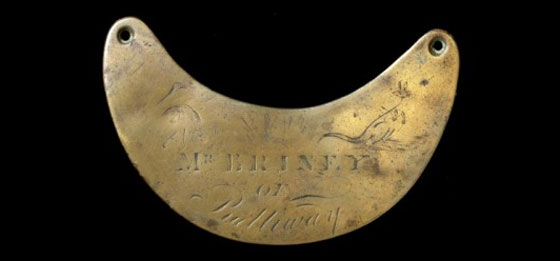Utilitarian to spiritual
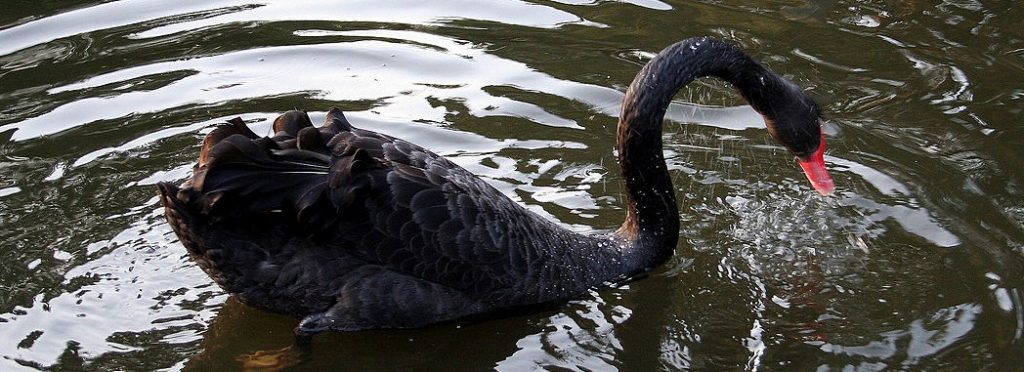
While it’s usually dangerous to make claims about universality, making them about water is relatively safe. The first way in which water is universal is its utility to human beings. The second is that almost every version of spirituality or religion references water, either by actually using it within its rites or by employing imagery of it. This page explores the two poles of that spectrum using radically different objects from the Museum’s collection.
Utility
There is no end to the ways in which water is useful to human beings. Water facilitates life. Without water, we die quickly. It’s that simple. We’re not alone in this. All other species are water dependent too. In addition to water for drinking, we depend very heavily on water based plant and animal species. In wetlands, humans find food, fibre and skins, and building products. Watery places are abundant in species, which is why they have always been attractive to humans.
The object selected to illustrate the theme of utility is an article of clothing, a 1940s woman’s evening cape made from the pelts of the water rat, Hydromys chyrogaster. The cape belonged to Mrs Elsie Hinchley (nee Hutchins), who lived in Narrandera, New South Wales. The water rat, or rakali, is a largely solitary creature, living in freshwater and eating insects, small crustaceans and fish. They are most common to temperate eastern Australia but can be found further north into hotter parts of the country. They have lustrous dark fur on their upper bodies and a lighter, more golden fur on their undersides. Its attractiveness was part of the water rat’s downfall.
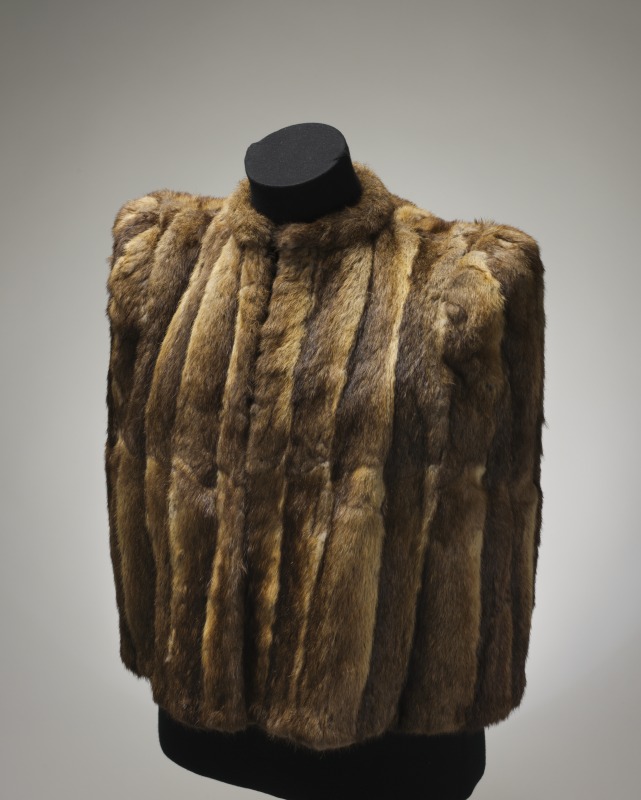
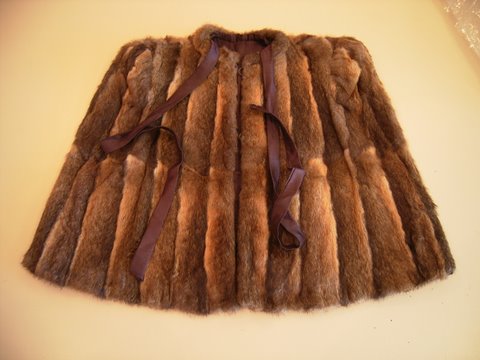
Fifty water rats were trapped and killed to make this cape. The donor, Ronda Thomas recalled that her uncle trapped rats in the irrigation ditches of their property at Griffith, and the highly valuable pelts were probably passed onto a local furrier to have the cape made. There was a widespread belief amongst farmers that the burrowing activities of the water rat destabilised canal walls, but it’s now considered that the water rat was not the culprit. As is so often the case in human history, the species that kept the real culprit in check was removed, thus exacerbating the problem. Think of the order to destroy the cats and dogs of London during the plague outbreak of 1665. In this much less dramatic example, part of the water rat’s diet, the freshwater crayfish, is now thought to be the main cause of channel destabilisation.
The water rat is not the only species to have been hunted to make humans look good. Fur has largely been the preserve of the rich and the royal, indicating their wealth and status through the wearing of such costly garments. While many animals were targeted, the fur of aquatic animals had properties that made it especially important in the fur trade. The water proof nature and the high thermal qualities of the fur, which aided the animals survival in their habitat, also make it highly attractive to humans. In Europe the beaver was largely hunted to extinction by 1500, and only the colonisation of north America and Canada prolonged the supply of beaver pelts for hats. Other aquatic species that have been hunted for their fur include the seal, the otter and in Australia, the platypus. The Museum also holds items made from platypus fur.
In the twentieth century, Hollywood film stars like Joan Crawford, Marlene Dietrich or Lana Turner wore furs in their films and publicity shots and were considered the epitome of glamour. Hoping to emulate them, many women aspired to some article of fur clothing. As this little piece from Perth’s Daily News in January 1920 indicates, even the smallest amount would do:
For evening wear in the hot weather the regulation theatre coat or wrap is too warm and heavy. The necessary protection can be provided with a wide satin scarf, which any girl who understands elementary sewing will be able to make herself. Buy two and a half yards of satin, and ruck the surface lengthwise, spacing the ruckings a few inches apart. Line with Oriental silk, and border with marabout or some other kind of fur. For a young girl satins in white or pastel tints, bordered with swansdown, look very dainty. Older women favor black, nigger brown, sapphire blue and grey.
Mrs Hinchey wore the cape to weddings, balls and other significant events in the area, and represents one country woman’s attempt to emulate the fashions of her day using local, native species. By the 1960s fur as fashion had reached its height. From the late 1960s and early 1970s, animal rights activists began to campaign against wearing fur. Oleg Cassini, the man who dressed Jackie Kennedy, lent his name to the campaign after his design for a leopard skin coat for her lead to the estimated slaughter of 250 000 leopards. Cassini later launched a range of fake fur. Brigitte Bardot also campaigned against using fur in fashion and famously was photographed with baby seals to highlight the deaths of animals for fashion.
Spiritual water
In contrast to the secular concerns of fashion, the next object focuses attention firmly on the importance of religion. The majority of religions, whether monotheistic or polytheistic, use water ritually. For example, Muslims ritually wash before prayer, while in Hinduism, the water of the Ganges is held to be sacred. In Christianity, the religion of the majority of European migrants, water is used in the rite of baptism.
One of the key rituals in Christian faiths is baptism. ‘He who believes and is baptised will be saved’, says the Gospel of Mark (Mark 16:16). This is echoed in the Gospel of John (John 3:5) saying, ‘Truly, truly, I say to you, unless one is born of water and the Spirit, he cannot enter the kingdom of God’. Baptism is seen as a spiritual death and rebirth in to the family of God. Water is the ultimate cleanser, the means of purification of the human soul, and by extension, of renewal and regeneration. Water’s cleansing power is one of its central meanings, consistently reworked across culture and time.
Baptisms originally took place in rivers and were a full immersion experience. Later, when the Christian church became more formal and larger, the practice of baptism began to move indoors. Originally separate baptisteries were built, which contained a below ground bath in which the inductee was immersed. Around the ninth century, the practice of full or semi immersion in the consecrated water changed to affusion, the form most people visualise now, where water is poured over the head of the person being baptised. The font is usually a carved bowl of stone set on a plinth or a column, and tends to be placed in the western section of a church.
Given how significant baptism is, and the importance of Christianity in the history of European Australia, it is interesting to discover that the Museum has no fonts in its collection. Their ongoing importance ensures that they are unlikely to be destroyed or removed from churches, except in exceptional circumstances. In contrast, the Museum holds a selection of christening gowns in its collection, the earliest from the 1870s. These survive because they remain within a family as treasured heirlooms, with some gowns in the collection being worn by five generations.
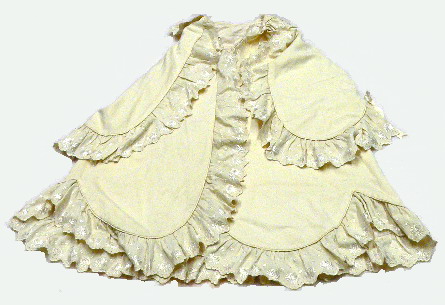
This christening gown was made by Rosina Humphries in the 1880s. It was made from finely woven, cream coloured wool, lined with cotton flannel and silk. The gown features a scalloped hem, adorned with silk embroidered waratahs on a ruffle trim. Unusually, this gown has indigenous floral motifs and is considerably shorter than usual.
In recognition of the spiritual significance of baptism, christening gowns were made using the best materials a family could afford, and were an opportunity for women to demonstrate their needlework skills. Usually an echo of the fashion of the day, they were white to symbolise purity and innocence. Christening gowns survive in relatively significant numbers because they were ceremonial, and not used in a regular sense like day clothes. Their survival indicates the importance of baptism to families over many decades: an importance that demonstrated the spiritual significance of water to all who witnessed the ceremony. Water symbolically cleansed the child and saved it from an automatic entry into hell.
In a strange way, both these water related objects are ceremonial. Mrs Hinchley wore her water rat cape to important social function including weddings, the other hugely important religious ritual which European Australians participated in. Both are special garments, one made from water animals and the other made to elevate humans above animals. Two water dependent creatures, two very different fates.
More
See the infamous leopard skin coat and read about the continuing controversies of fur.
Learn more about water rats.
Top image: Photography by Jean-Pol Grandmont, Wikimedia commons.
Author’s note: I’d like to thank all the staff at the Museum who helped me to put together this series, and in particular, Kirsten Wehner for agreeing to take me on as a volunteer and George Main for all his assistance and kindness.

